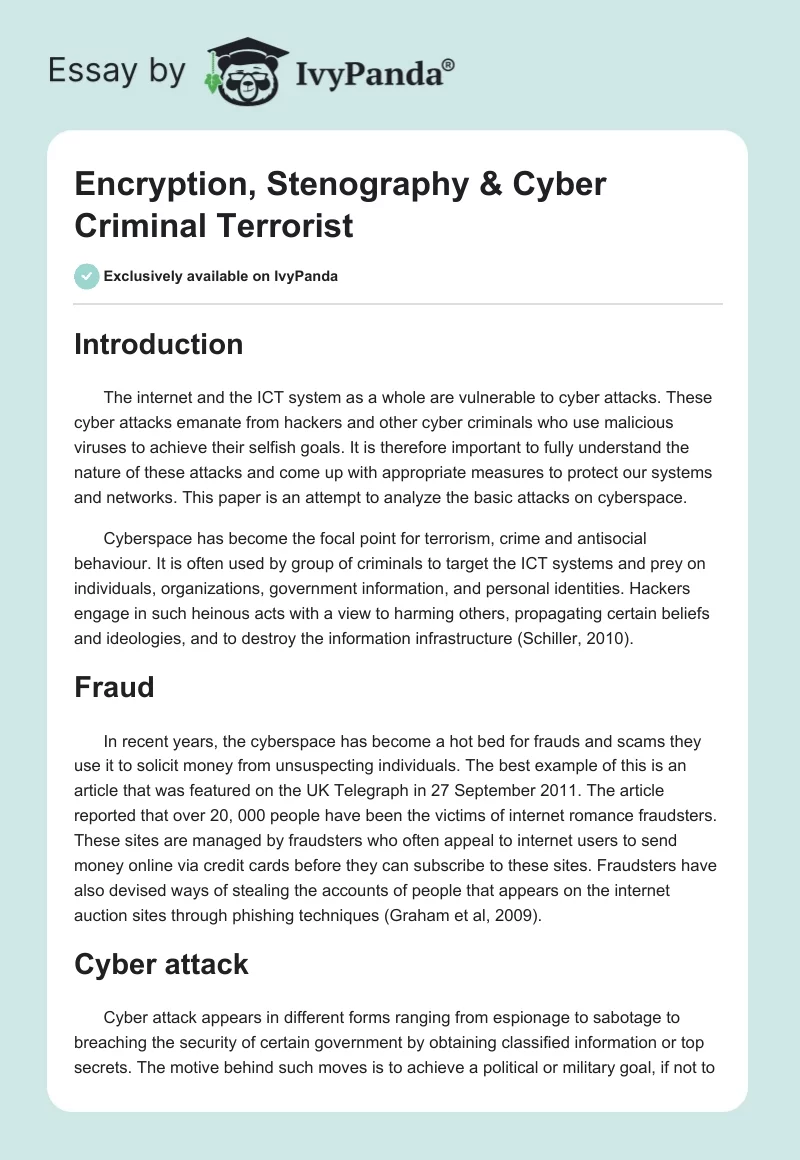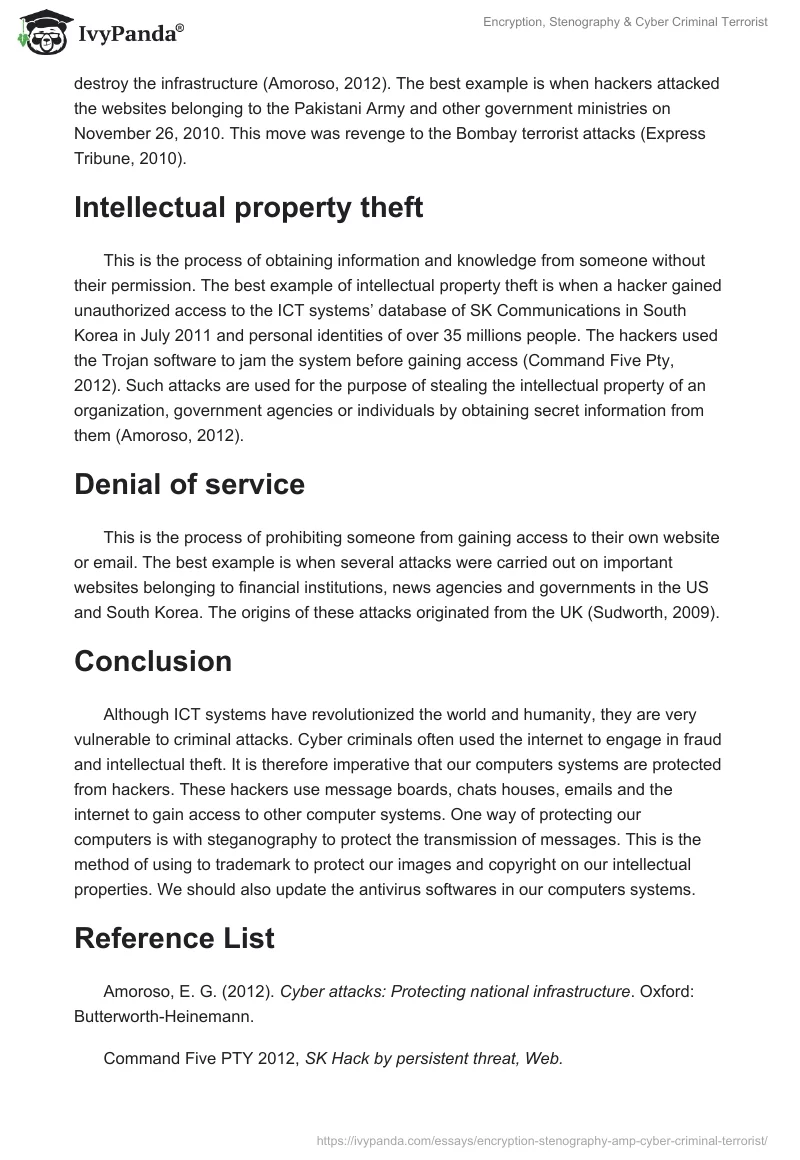Introduction
The internet and the ICT system as a whole are vulnerable to cyber attacks. These cyber attacks emanate from hackers and other cyber criminals who use malicious viruses to achieve their selfish goals. It is therefore important to fully understand the nature of these attacks and come up with appropriate measures to protect our systems and networks. This paper is an attempt to analyze the basic attacks on cyberspace.
Cyberspace has become the focal point for terrorism, crime and antisocial behaviour. It is often used by group of criminals to target the ICT systems and prey on individuals, organizations, government information, and personal identities. Hackers engage in such heinous acts with a view to harming others, propagating certain beliefs and ideologies, and to destroy the information infrastructure (Schiller, 2010).
Fraud
In recent years, the cyberspace has become a hot bed for frauds and scams they use it to solicit money from unsuspecting individuals. The best example of this is an article that was featured on the UK Telegraph in 27 September 2011. The article reported that over 20, 000 people have been the victims of internet romance fraudsters. These sites are managed by fraudsters who often appeal to internet users to send money online via credit cards before they can subscribe to these sites. Fraudsters have also devised ways of stealing the accounts of people that appears on the internet auction sites through phishing techniques (Graham et al, 2009).
Cyber attack
Cyber attack appears in different forms ranging from espionage to sabotage to breaching the security of certain government by obtaining classified information or top secrets. The motive behind such moves is to achieve a political or military goal, if not to destroy the infrastructure (Amoroso, 2012). The best example is when hackers attacked the websites belonging to the Pakistani Army and other government ministries on November 26, 2010. This move was revenge to the Bombay terrorist attacks (Express Tribune, 2010).
Intellectual property theft
This is the process of obtaining information and knowledge from someone without their permission. The best example of intellectual property theft is when a hacker gained unauthorized access to the ICT systems’ database of SK Communications in South Korea in July 2011 and personal identities of over 35 millions people. The hackers used the Trojan software to jam the system before gaining access (Command Five Pty, 2012). Such attacks are used for the purpose of stealing the intellectual property of an organization, government agencies or individuals by obtaining secret information from them (Amoroso, 2012).
Denial of service
This is the process of prohibiting someone from gaining access to their own website or email. The best example is when several attacks were carried out on important websites belonging to financial institutions, news agencies and governments in the US and South Korea. The origins of these attacks originated from the UK (Sudworth, 2009).
Conclusion
Although ICT systems have revolutionized the world and humanity, they are very vulnerable to criminal attacks. Cyber criminals often used the internet to engage in fraud and intellectual theft. It is therefore imperative that our computers systems are protected from hackers. These hackers use message boards, chats houses, emails and the internet to gain access to other computer systems. One way of protecting our computers is with steganography to protect the transmission of messages. This is the method of using to trademark to protect our images and copyright on our intellectual properties. We should also update the antivirus softwares in our computers systems.
Reference List
Amoroso, E. G. (2012). Cyber attacks: Protecting national infrastructure. Oxford: Butterworth-Heinemann.
Command Five PTY 2012, SK Hack by persistent threat, Web.
Express Tribune 2010, 36 Government sites hacked by ‘Indian Cyber Army’, Web.
Graham, J., Howard, R., Thomas, R., Winterfeld, S., & Bryan, K. (2009). Cyber fraud: Tactics, techniques, and procedures. Boca Raton: CRC Press.
Schiller, J. (2010). Cyber attacks & protection: Civilization depends on Internet & email: using research from the Internet. Scotts Valley, Calif: CreateSpace.
Sudworth J 2009, New cyber attacks hit South Korea, Web.
Telegraph 2011, 200,000 fall victim to internet romance scams in UK, Web.


